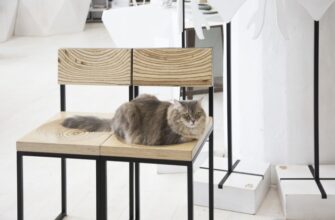On 25 November 2016 in the Engineering building of the Tretyakov gallery was opened the exhibition Eternal Rome, or “Roma Aeterna. Masterpieces Of The Vatican Picture Gallery. Bellini, Raphael, Caravaggio“. 42 paintings making up 10% of the Pinakothek, are available to the visitors of the Tretyakov gallery. Exhibitors represent a Christian fine art masterpieces of XII-XVIII centuries, which includes in addition to the mentioned authors M. da Forli, Fra Angelico, Perugino, Reni, Guercino, N. Poussin.
The exhibition in the Tretyakov gallery will be opened from 25 November 2016 till 19 February 2017. In 2017, the Vatican will host an exhibition of Russian Orthodox art, 90% of which derives from the collection of the Tretyakov gallery.
The Pinacoteca is part of the Vatican museums, consisting of 25 museums. The Museum collection of the Vatican leads to the beginning of the collection of Pope Julius II, and the collection of Pinakothek – to 118 paintings of Pius VI (around 1790). For the General public Pinakothek was opened in 1932 by Pope Pius XI. Collection of Pinakothek, which comprises about 470 masterpieces of paintings of the XII-XIX BB is 18 rooms, located chronologically considering schools of painting.
Barbara Jatta, Deputy Director of the Vatican Museums, in an interview to cultural and political magazine “E Vesti” stressed: “Our mission is to share art with other cultures, and we know that the Russian soul is very sensitive to Italian art. Preparation of the exhibition was complicated, it involved a lot of people, but we are happy to bring tribute to the beauty and culture. We are always opened to other cultures, but outside show of these masterpieces is exceptional because of safety. The Tretyakov gallery has assured us of their safety”. We asked Barbara for our readers to highlight 3 special works of art, she replied: “first, it is the frescoes of angels by Melozzo da Forli. In the Museum we have an entire room devoted to da Forli. These frescoes were recovered from the Roman Church of the XI century. In my opinion, don’t be da Forli, there would be no Michelangelo, no Raphael. Da Forli worked for 25 years before them. The second – “the Lamentation of Christ” by Giovanni Bellini, which is one of the jewels of our collection. And third – “the entombment” by Caravaggio, which was taken by Napoleon to the Museum of Paris, but then returned to the Pinakothek”.
The exhibition consists of 2 halls, the first of which begins with icons of the XII century, close to us in writing; then we have the chance to see the transformation of this iconography through the best Western artists in the schools XV-XVI centuries. Here “Christ Blesses” XII century, “St. Francis of Assisi” of the XIII century – one of the earliest depictions of the Saint, the Gothic paintings, including “Jesus before Pilate” by P. Lorenzetti, early Renaissance, fra Angelico.
In the second hall there are paintings of the high Renaissance (Perugino, Raphael, Correggio, Veronese) and Baroque (Karachi, Reni, Guercino, Crete).
Director of the Tretyakov gallery Z. Tregulova in an interview with “E Vesti” said that “the exhibition of foreign art of this magnitude was held in the Museum for the first time. Moreover, I think that after the collapse of the USSR in Moscow we have not seen exhibitions of such a level, with the exception, perhaps, of the exhibition of Caravaggio in the Pushkin Museum”. Answering the question of the relevance of the exhibition for visitors to the Tretyakov gallery, Z. Tregulova said: “Russian artists in the nineteenth century went to Italy very often, they studied at the Academy in Rome, and what they saw made a huge impact on them. In the XIX century we’re talking about A. Ivanov, K. Briullov, F. Bruni. The Italian influence is also very noticeable in the works of Russian artists of the turn of the century: Mikhail Vrubel and others, although they put a completely different artistic tasks. It will be the subject of the exhibition, which we will show together with the Vatican in 2017”.
Sources: Museum of Vatican




